Unit 3
Aggregate Demand(AD)
- shows amount of Real GDP that private, public, and foreign sectors collectively desire to purchase at each possible price level
- the relationship between the price level and the level of Real GDP is inverse
Three reason for Downward Slope
- Real-Balance Effect:
- When price level is high, households and businesses can't afford to purchase as much output
- When price level is low, household and businesses can afford to purchase more output
- Interest-rate effect:
- Higher price level increases interest- rate which tends to discourage investment
- Lover price level decreases interest rate which tends to encourage investment
- Foreign purchases effect
- Higher price level increases demand for relatively cheaper imports
- Lower price level increases foreign demand for relatively cheaper U.S. Imports
- There are two parts to a shift in AD
- Change in C, Ig, G, and/or Xn
- Multiplier effect that produces a greater change than the original change in the four components
- increase in AD shift to right
- decrease in AD shift to left
Determinates of AD
- Consumption (C)
- Consumer wealth: more wealth = more spending (AD =>), less wealth = less spending (AD<=)
- Consumer expectations: positive expectations= more spending (AD =>), negative expectations = less spending (AD <=)
- Household in debt: less debt = more spending (AD =>), more debt = less spending (AD <=)
- Taxes: less taxes = more spending (AD <=), more taxes = less spending (AD <=)
- Gross Private Domestic Investment (Ig)
- real interest rate: lower real interest rate = more investment (AD =>), higher real interest rate = less investment (AD <=)
- expected returns: higher expected returns= more investment (=>), lover expected returns = less investments (<=)
- influenced by
- technology, business taxes, degree of excess capacity(existing stock) (lack of capital), expectations for future profitability
- Government Spending (G)
- More government spending (=>), less government spending (<=)
- Net Exports (Xn)
- exchange rates (International value of $)d: strong $ = more imports and fewer exports (<=), weak $ = fewer imports and more exports (=>)
- Relative income: strong foreign economies = more exports (=>), weak foreign economies = less exports (<=)
This is the level of Real GDP that firms will produce at each price level
Long-run vs. Short-run
|
|
Long-Run
|
Short-Run
|
·
Period of time where input prices are
completely flexible and adjust to changes in the price level
|
·
Period of time where input prices are inflexible
(sticky) and do not adjust to changes in the price level.
|
·
The level of Real GDP supplied is independent
of the price level
|
·
The level of Real GDP supplied is directly
related to the price level
|
Long-Run Aggregate Supply (LRAS)
- The long-run aggregate supply or LRAS marks the level of full employment in the economy (analogous to PPC) ***LRAS will always be vertical at full employment***
Changes in SRAS
- An increase in SRAS is seen as a shift to the right (=>)
- A decrease in SRAS is seen as a shift to the left (<=)
- The key to understanding shifts in SRAS is per unit cost of production
- per unit production cost= (Total input cost) / (total output)
- All of the following effect per unit production cost
- Input prices
- Increase in resource prices = SRAS (<=)
- Decrease in resource prices = SRAS (=>)
- Productivity
- Productivity = (Total output) / (total input)
- more productivity = lower unit production cost = SRAS (=>)
- Lower productivity = higher unit production cost = SRAS (<=)
- Legal-institutional environment
Ranges/ Shapes/ Views of AS
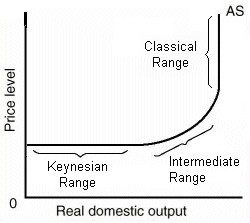
Keynesian Range (Horizontal)
- Followers of Keynesian view believe in a horizontal AS curve because when the economy is below full employment AD shifts outward (increase in Real GDP, unemployment drops by the price level is constant/ Demand creates its own supply)
- In the long-run, AD curve is vertical because the only effects of an increase in AD is when we are already at full employment thus you have an increase in price level and supply creates its own demand "Say's Law"
- AS is between the classical and Keynesian range, when this occurs as AS shifts outward, price level and Real GDP increase
- An inflationary gap exists when equilibrium occurs beyond full employment output
Changes in AD
- Change in Consumption C), Gross Private Domestic Investment(Ig), Government Spending(G), and Net Exports(Xn)
- Change(^) AD(>) Real GDP (^) PL (^) u%(v) π%(^)
- Change(v) AD(<) Real GDP (v) PL (v) u%(^) π%(v)
- u% = unemployment π% = inflation
- AD (>) Real GDP(^) PL(^) u%(v) π%(^)
- AD(<) Real GDP (v) PL (v) u%(^) π%(v)
Changes in SRAS
- Input prices and Legal-institutional environment
- decrease/deregulation
- SRAS(>) Real GDP(^) PL(v) u%(v) π%(v)
- increase/regulation
- SRAS(<) Real GDP(v) PL(^) u%(^) π%(^)
- Productivity
Increase in SRAS
- Input prices (v), Productivity (^), and/or deregulation
- SRAS(>) Real GDP(^) PL(v) u%(v) π%(v)
- Input prices (^), Productivity (v), and/or regulation
- SRAS(<) Real GDP(v) PL(^) u%(^) π%(^)
Long-run aggregate supply
- Measuring potential output, assessing if all resources are used efficiently
- efficient- no pressure to raise or lower factor prices
- inefficient(under-utilizing resources)- factor prices are pressured to fall
- over-utilizing resources- factor prices are pressured to rise
Shifts of long-run AS
- Technology
- Economic growth
- Capital
- Entrepreneurship
- More resources available
What is an investment?
- money spent(expenditures) on:
- new plants (factories)
- capital equipment (machinery)
- inventories (goods sold by producers)
- technology (hardware and software)
- new homes
- How does a business make investment decisions?
- Cost/benefit analysis
- How does a business determine benefits?
- Expected rate of return
- How does a business count cost?
- Interest costs
- How does a business determine the amount of investment they undertake?
- Expected return > interest cost, they invest
- Expected return < interest cost, they do not invest
Real (r%) vs Nominal (i%)
- Nominal is observable rate of interest. Real subtracts out inflation and is only known ex post facto
- r% = i% - π%
- What determines the cost of investment decisions?
- Real interest rate (r%)
Investment demand curve (ID)
- Shape of IDC?
- Downward sloping because:
- When interest rates are high, fewer investments are profitable; when interest rates are low, more investments are profitable
- Conversely, there are few investments that yield high rates of return, and many that yield low rates of return
Shifts in ID
- Cost of production
- Business taxes
- Technological change
- Stock of capital
- Expectations
Consumption and Saving
- Disposable income
- income after taxes or net income
- households can either:
- consume (spend money on goods and services)
- save (not spend money on good and services)
- Consumption
- household spending, the ability to consume is constrained by:
- amount of DI and propensity to save
- Do households consume if DI=0
- autonomous consumption and dissaving
- Saving
- household NOT spending
- ability to save is constrained by:
- amount of DI and propensity to consume
- Households don't save if DI=0
APS and APC
- Average propensity to save or consume
- APC + APS = 1
- 1 - APC = APS
- 1 - APS = APC
- APC > 1 = dissaving -APS = dissaving
MPC and MPS
- Marginal propensity to consume or save
- MPC = Change in C / Change in DI
- % of every extra dollar earned that is spent
- MPS = Change in S / Change in DI
- % of every extra dollar earned that is saved
- MPC + MPS = 1
- 1 - MPC = MPS
- 1 - MPS = MPC
Determinates of C and S
- Wealth
- Expectations
- Taxes
- Household debts
Spending Multiplier Effect
- initial change in spending (C, Ig, C, Xn) causes a larger change in AD
- Multiplier = Change in AD / Change in spending(C, Ig, C, Xn)
- Expenditures and income flow continuously which sets off a spending increase in the economy
- Multiplier = 1/(1-MPC) or 1/(MPS)
- Multipliers are (+) when there is an increase in spending and (-) when there is a decrease in spending
Calculating the Tax Multiplier
- When the government taxes, the multiplier works in reverse
- Why?
- Because now money is leaving the circular flow
- Tax Multiplier(its negative) = -MPC / (1-MPC) or -MPC/MPS
- If there is a tax cut, then the multiplier is (+), because there is now more money in the circular flow
Steps to solve a multiplier problem
- Calculate MPC and MPS
- Decide which multiplier and whether it is (+) or (-)
- Calculate spending and/or tax multiplier
- Calculate the change in AD
Other Multipliers
- Investment multiplier
- change in GDP = change in investment x investment multiplier
- Government spending multiplier
- change in GDP = change in government spending x government spending multiplier
- Tax multiplier
- change in GDP = change in taxes x tax multiplier
Fiscal Policy
- expansionary and contractionary policy, deficits and surpluses, built in stability,
- changes in the expenditures or tax revenues of the federal government
- tools:
- taxes- government can increase or decrease taxes
- spending- government can increase or decrease spending
- Fiscal policy is enacted to promote our nation's economic goals: full employment, price stability economic growth
Deficits, surpluses, and debt
- Balanced budget: revenues = expenditures
- Budget deficit: revenues < expenditures
- Budget surplus: revenues > expenditures
- Government debt: sum of all debts - sum of all surpluses
- borrows from
- individuals(taxes)
- corporations
- financial institutions
- foreign entities or foreign governments
- Discretionary Fiscal Policy(action)
- expansionary fiscal policy: think deficit, recession easy money policy
- contractionary fiscal policy: think surplus, inflationary period
- Non-discretionary fiscal policy(no action)
Discretionary vs Automatic
Discretionary
|
Automatic
|
Increasing or decreasing government spending and/or taxes in order to
return economy to full employment. Discretionary policy involves policy
makers doing fiscal policy in response to an economic problem.
|
Unemployment compensation and marginal tax rates are examples of
automatic policies that help mitigate effects of recession and inflation.
Automatic fiscal policy takes place without policy makers having to respond
to current economic problems.
|
- Policy designed to decrease aggregate demand
- strategy for controlling inflation
- inflation is countered with contractionary policy
- decrease government spending (G(v))
- increase taxes (T(^))
Expansionary Fiscal Policy
- policy designed to increase aggregate demand
- strategy for increasing GDP, combating a recession and reducing unemployment
- recession is countered with expansionary policy
- increase government spending (G(^))
- decrease taxes (T(v))
Tax System
- progressive: average tax rate (tax revenue / GDP rises with GDP
- proportional: average tax rate remains constant as GDP changes
- Regressive: average tax rate falls with GDP
- the more progressive the tax system, the greater the economy's built-in stability
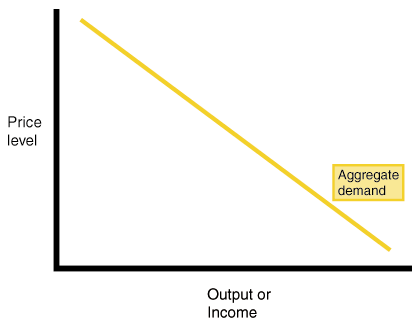
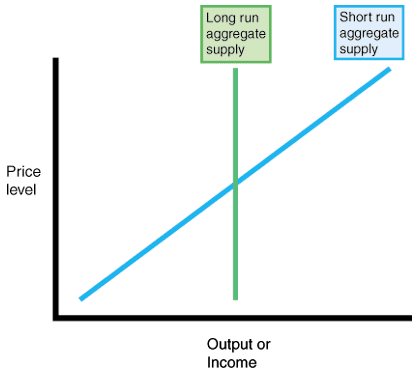
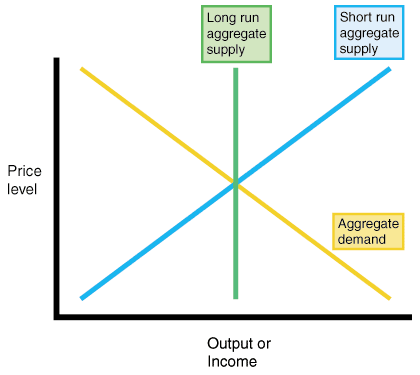
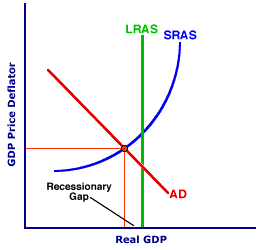
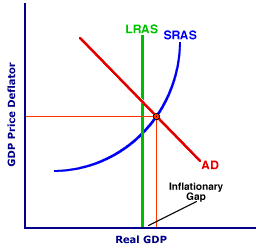



I love the way you organized your information, it helps me find different information in a shorter amount of time. It also makes it so much easier since you underline the important things and made the headings a different color. One suggestion that I might have for you is that you could maybe add the graphs that we copied down in class on the big sheet (investment demand graph, consumption function, and etc.)
ReplyDelete